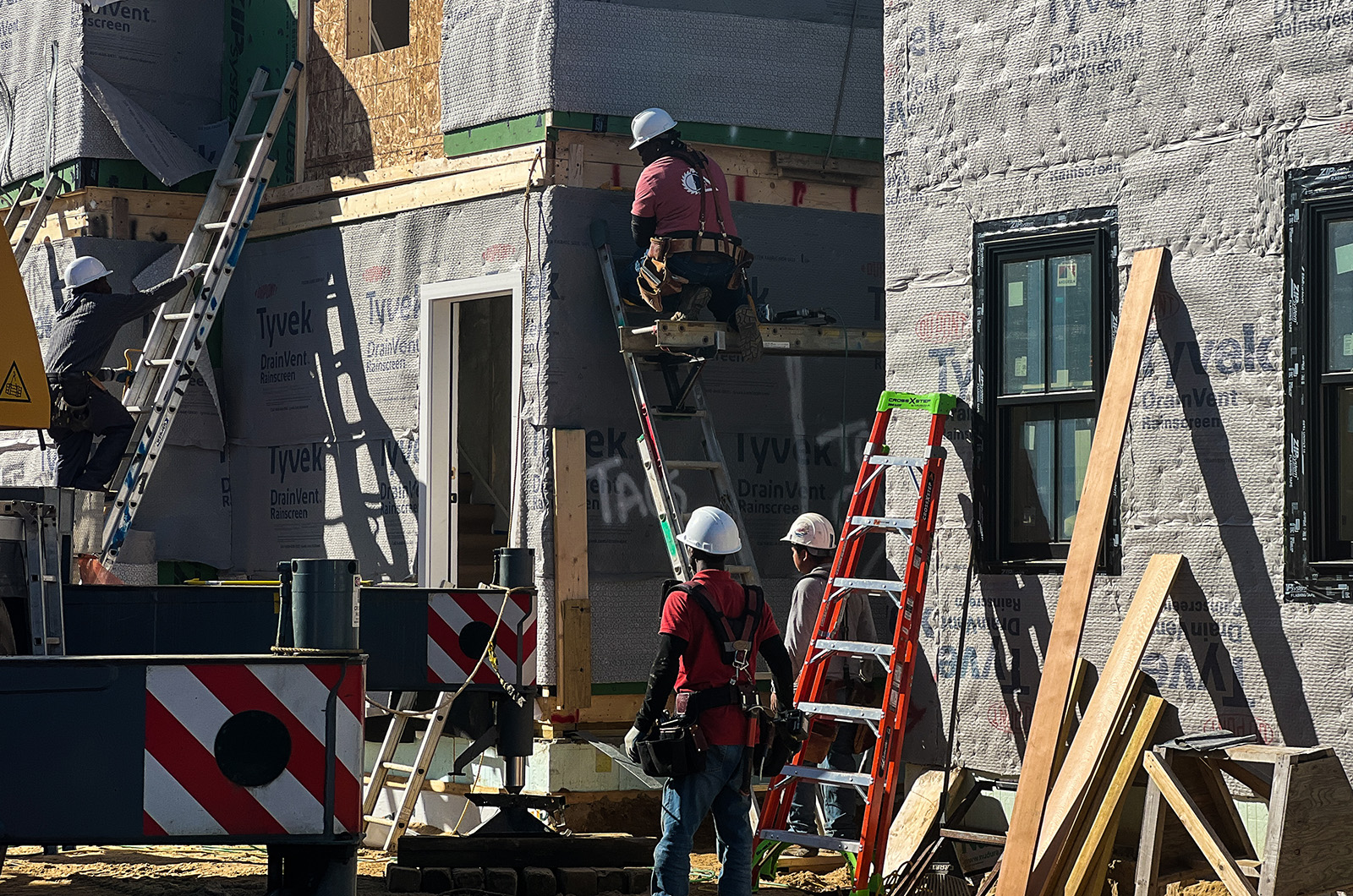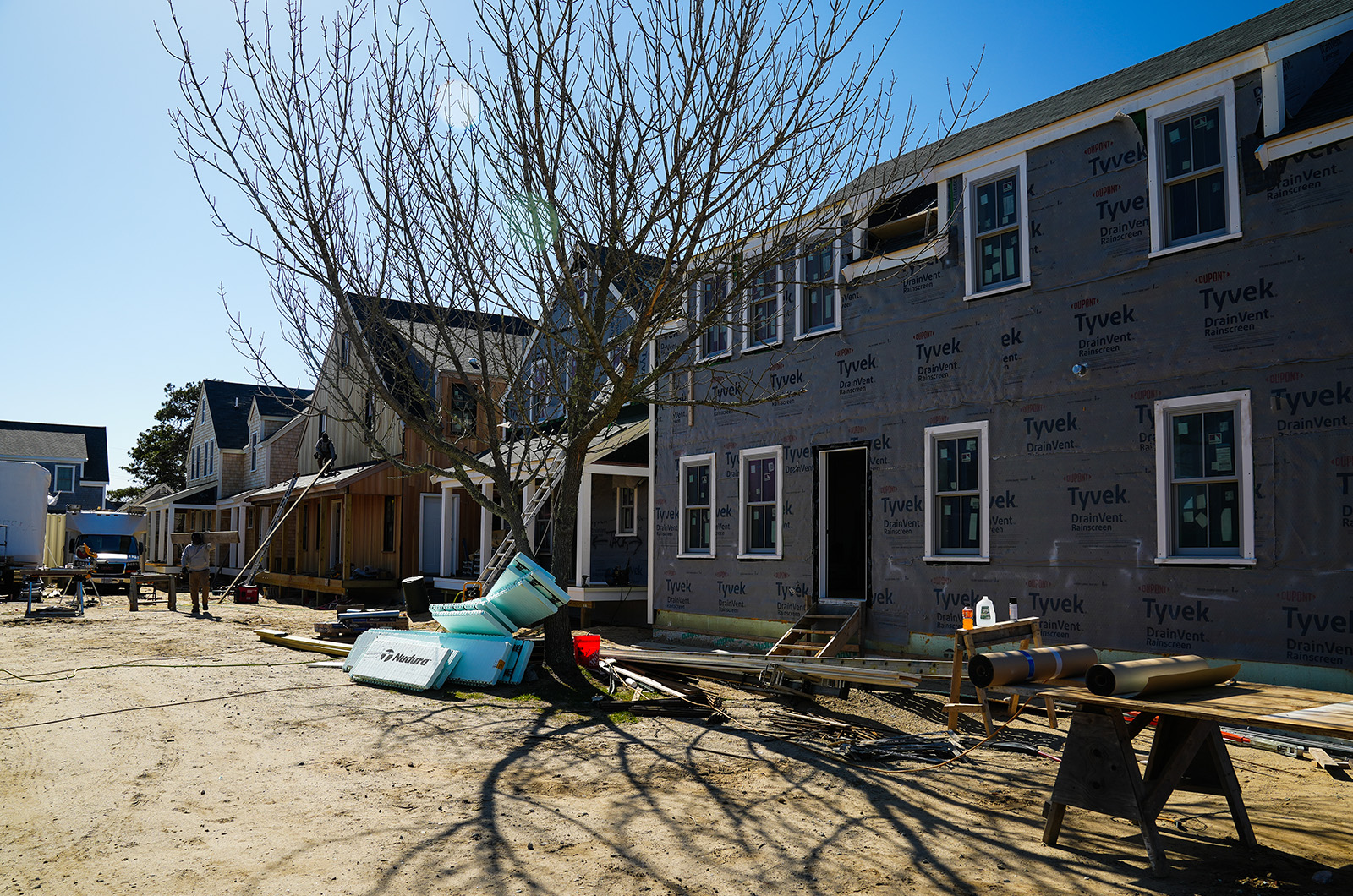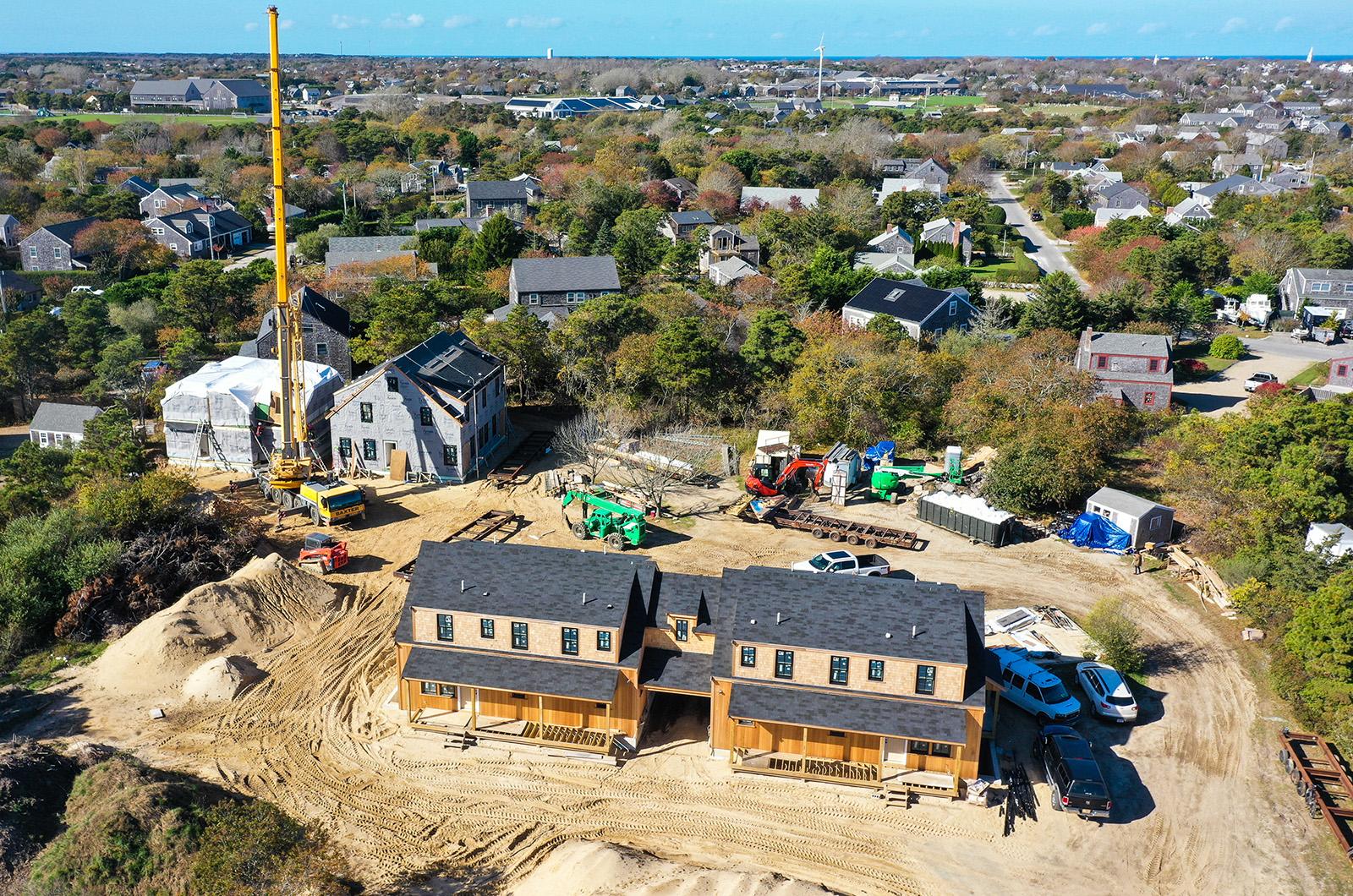When 200 Vineyarders took to the steps of Beacon Hill last month to make their case for an Islandwide housing bank, state Sen. Julian Cyr and Rep. Dylan Fernandes urged Islanders to explore additional local solutions, offering the same advice.
“Look to Nantucket,” Mr. Fernandes said.
As the Vineyard’s sister island, Nantucket and its multi-million dollar real estate market have been positioned as an ominous indicator of what’s to come. Recently, local housing advocates have started to look to its island neighbor and other seasonal vacation communities for clues on how to move forward.
More government investment, incentives to increase housing density, deed restrictions requiring year-round occupancy and caps on short-term rentals are among the tools being tried in Massachusetts and elsewhere to address the issue.
“They’re about five years ahead of us,” Edgartown planning board chair Lucy Morrison said of Nantucket. “Their situation is much more dire, but because of that there’s been more action.”
Last year, the average home price on Nantucket crested just over $4 million, just as the Vineyard’s average reached $2.2 million. Nantucket housing director Tucker Holland said that the extreme nature of Nantucket’s housing crisis has prompted officials to look for creative solutions, including modifying its zoning bylaws to support the development of year-round housing.
In 2015, Nantucket voters approved a bylaw to encourage workforce homeownership and rentals, offering a density bonus to properties that were at least 25 per cent income restricted.
Mr. Cyr said that many of the Vineyard’s current zoning bylaws actively discourage density, particularly the three-acre parcel minimum that restricts construction in the up-Island towns.
“If you look at the Vineyard’s zoning bylaws, they lend themselves to building second homes and luxury homes,” he said.
In the Island’s denser downtown neighborhoods, parcels are not restricted to single-family dwellings, but there are few town incentives to combat the general market trend of larger, single-family seasonal homes. Mr. Cyr also pointed out that while affordable housing is one area of improvement, other reforms must take place to put homeownership in reach for the middle class.
“We’re going to have to build our way out of this in part,” Mr. Cyr said.
Nantucket has also made investments in affordable housing a greater priority, devoting large chunks of its budget to the issue. Since 2019, the town has dedicated about $70 million to housing. In 2022, Nantucket residents voted to allocate $40 million to affordable housing efforts. This year, Nantucket voters will also weigh in on a proposed $6.5 million permanent tax override to fund housing initiatives.
Meanwhile, Vineyard towns have collectively allocated approximately $10 million for housing since 2019. This year, town warrants propose a little more than $2 million towards affordable housing and housing initiatives.
Some Island towns are leaving money on the table, as well.
In 2018, the state allowed municipalities to impose up to a 6 per cent tax on short-term rental stays, which are paid for by vacationers. While they could go higher, Aquinnah, Chilmark and Edgartown only collect 4 per cent.
Additionally, while most of Nantucket’s windfall from the short-term rental and lodging tax goes back into affordable housing, almost every Vineyard town’s revenue pours back into the general fund, Oak Bluffs affordable housing chairman Mark Leonard said.
“They as a community have decided that they are going to invest in housing,” Mr. Leonard said.

In Edgartown, short-term rental tax revenue goes into a capital stabilization fund, which requires a two-thirds majority vote for any withdrawals. Unlike the general fund, a stabilization fund rolls over year to year, collects interest, and can be used on any capital expenses over $25,000.
Although Edgartown town administrator James Hagerty did not disclose the total amount in the capital stabilization fund, he said the town expects to spend roughly $100 million on capital expenses in the next five to 10 years.
“Instead of making any commitments, Edgartown has been putting it aside,” Ms. Morrison said.
Mr. Hagerty added that in the past, the town’s affordable housing committee has floated dedicating a set percentage of that revenue each year to affordable housing initiatives.
“We’ve responded that they have about $750,000 in their fund now and if they have a proposal for a project they can go through the regular channels,” he said.
Both islands face another unique real estate problem: a finite amount of space for new developments, plus a disproportionate number of seasonal properties cutting into existing inventory. On the Vineyard, 49 per cent of homes sit empty year-round.
Despite these limitations, Nantucket has also had more ambitious housing proposals than the Vineyard, with one ongoing project potentially adding 225 rental apartments. The largest projects before Vineyard town boards right now top out at about 60 units.
Other vacation communities have explored deed restrictions as a way to maintain their year-round population. Vail, Colo., for instance, implemented a buy-down program in which the town purchases existing properties, places deed restrictions on them for year-round occupancy and puts them back on the market to rent or buy at a subsidized price.
“The restriction in Vail’s case requires them to work in Vail,” Mr. Holland said.
Mr. Leonard said deed restrictions such as the ones in Colorado are key to keeping prices down for year-round residents.
“[Without them,] your rent can go up any time, or can go away,” he said.
In Massachusetts, municipal deed restriction is a bit more complicated, Ms. Morrison said, since municipalities don’t currently have the legal authority to deed restrict in perpetuity. A recent bill filed in the state legislature seeks to change that, opening the doors for towns to set up their own buy-down programs.
The affordable housing development nonprofit Island Housing Trust has also been looking into purchasing and deed-restricting homes using Vail’s model, but has not yet found a reliable funding source. In Vail, the buy-down program is funded by a bond measure set by the town.
“If passed, the housing bank and transfer fee could fund this type of program,” housing trust CEO Philippe Jordi said. “With the market where it is...right now we just don’t have those kinds of resources.”
Across New England, coastal resort communities have taken different strategies to try and ease their housing crunches.
In Bar Harbor, Me., a tourist hotspot on Mount Desert Island, the town has put a cap on the number of non-owner-occupied short-term rentals, limiting them to 9 per cent of the total housing units in town.
Provincetown, meanwhile, spent more than $8 million in 2018 to buy a foreclosed 28-unit timeshare facility to create the state’s first municipally-owned market rate housing complex.
The complex is now filled and seeks to hit the “missing middle,” people who make too much money to qualify for affordable housing but still fall well short of being able to live in Provincetown, where the median home sale price in 2022 was $2 million.

At town meeting this year, Provincetown voters also passed a home rule petition to create their own year-round deed restriction program. The program, which needs to be approved by the state legislature, would allow the town to buy deed restrictions from homeowners that would prevent properties from becoming seasonal homes.
That same town meeting approved $2.25 million in funding for a 65-unit affordable housing development. Still, the search for developable land has proven challenging for the town at the tip of the Cape. Leslie Sanberg, a Provincetown select board member, said the town has looked into developing housing on parking lots, in old public safety buildings and even on an underutilized land near Route 6.
“Even the smallest piece counts,” she said.
Some see these other communities as unfair comparisons, since six Island towns means six times more bureaucratic obstacles to pushing through any kind of agenda. Martha’s Vineyard Commission housing planner Laura Silber emphasized the need for an Islandwide discussion around housing issues even if the solutions look different for each town.
“None of our towns function if our other towns aren’t functioning,” she said.
To foster those discussions, the MVC plans to create a Housing Action Task Force, hosting open public meetings on the latest housing developments Islandwide. The six Island planning boards have already begun to work with the MVC to commission a study on short term rentals’ economic impacts on the community.
Mr. Jordi said that a similar study in Vail prompted local officials to take more immediate action, and that he hopes Island lawmakers follow suit.
“Once we know the impacts, that’s when we can really come together and look for solutions,” he said. “That’s what’s really going to stem the bleeding.”







Comments (47)
Comments
Comment policy »